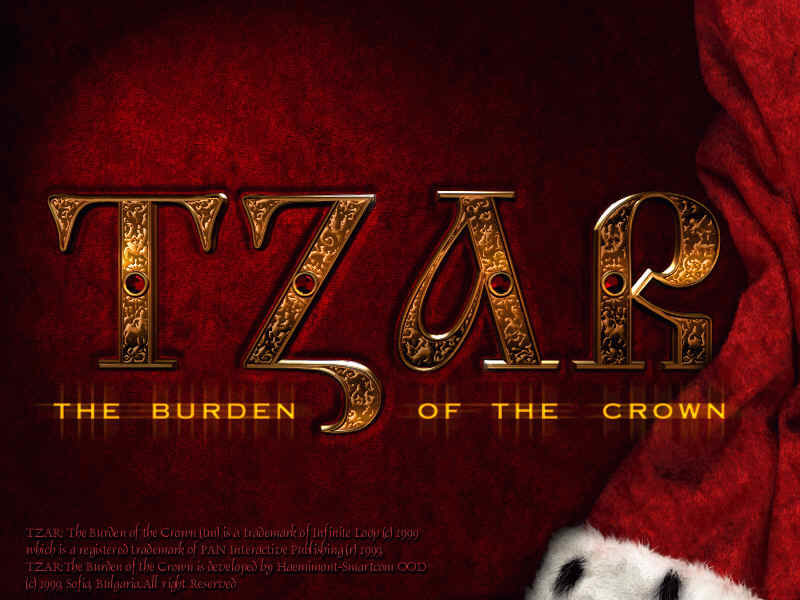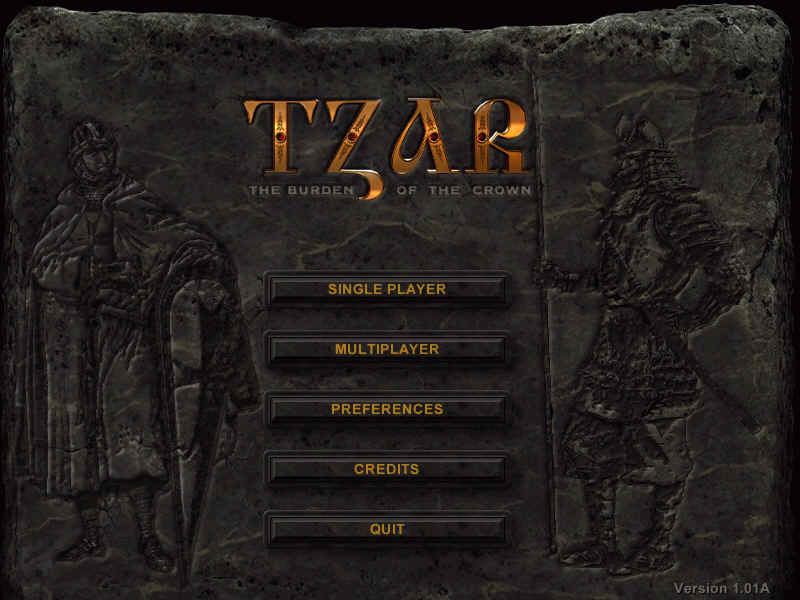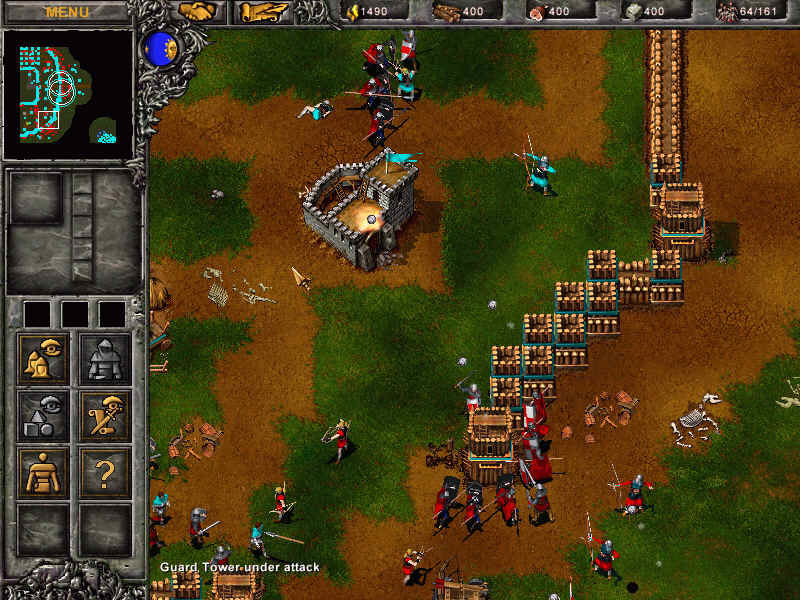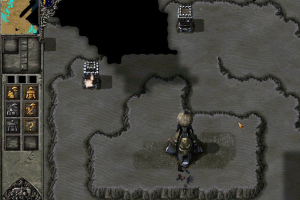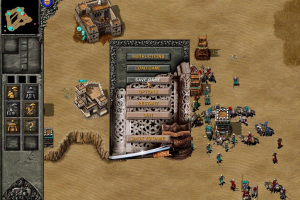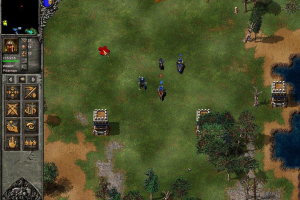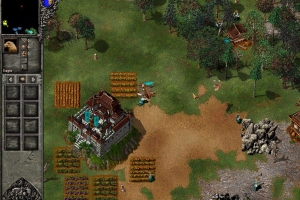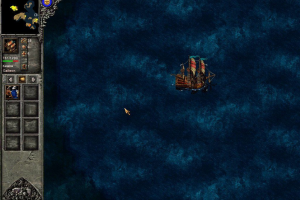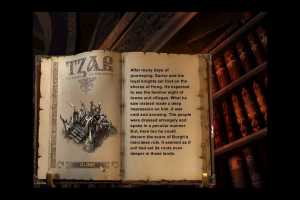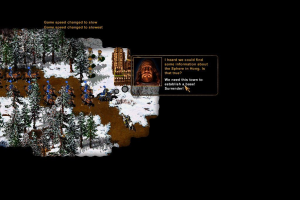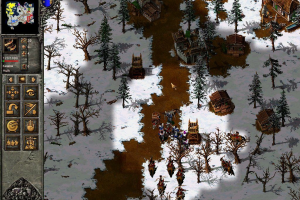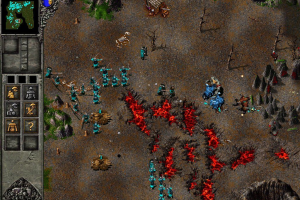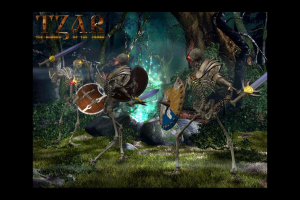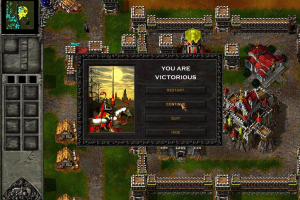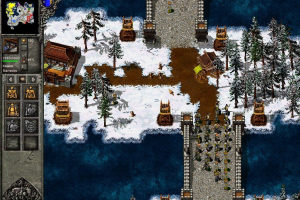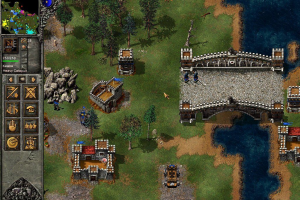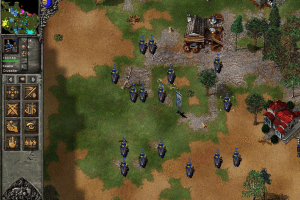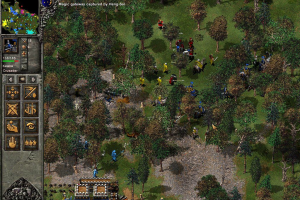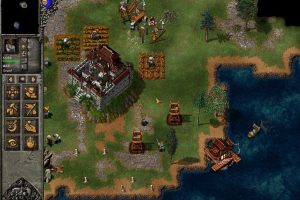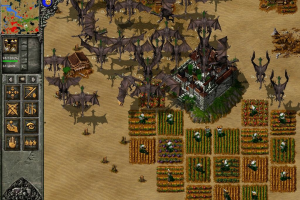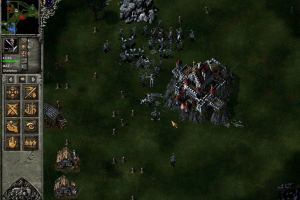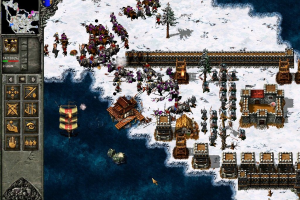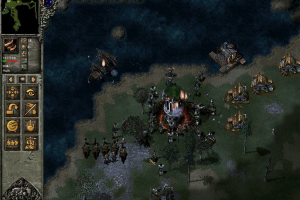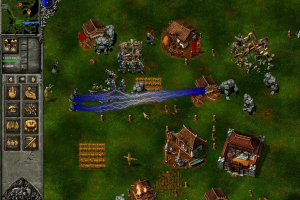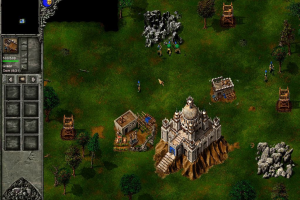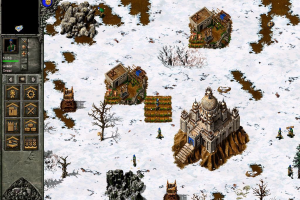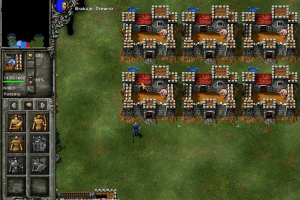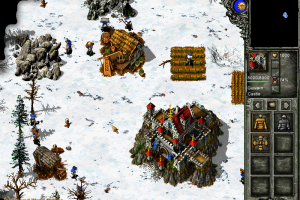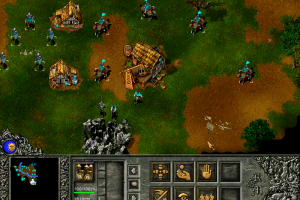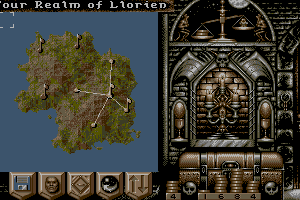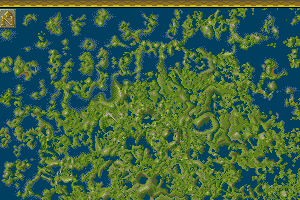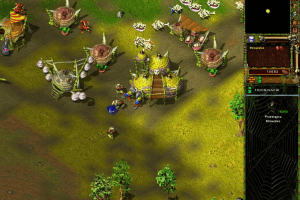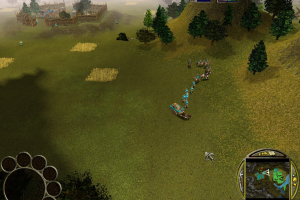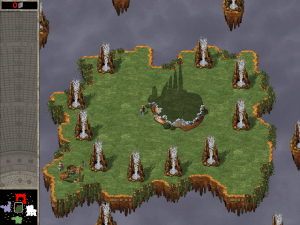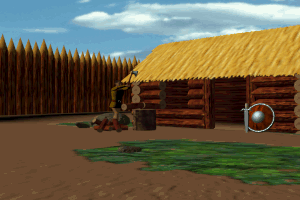Tzar: The Burden of the Crown
Windows - 2000
Description of Tzar: The Burden of the Crown
I have to admit, it's probably impossible to avoid going through Age of Empires deja-vu when you first start playing Tzar: Burden of the Crown. How could you, since the developers seem to make no effort to disguise the similarities? In the tutorial you learn how to use peasants to cut trees to gather wood, mine stone and gold, and tend farms for food. You erect structures so you can build units, research technology, or increase your potential population size.
On the surface, you'd be hard-pressed to spot any substantive difference.
But, as you play, the game starts to develop a flavor all of its own, both stylistic and strategic. You find that, while the surface bears an uncanny resemblance to AOE, underneath the surface is a wealth of options that make the game unique and challenging. Not many of these options are exactly innovative in and of themselves, since most are cobbled together from other games in the genre: Seven Kingdoms, Starcraft, Master of Magic, and Heroes of Might and Magic, among others. And not all of the differentiators are good things. But at the end of the day, what you find is that Tzar has unique and deep strategic elements and lots of gameplay options that help set it apart from the crowd.
A Sinister Evil
The palace of Keanor lies in ruin. Armies of malevolent warriors overrun this land of beauty, mystery, and magic. The people pray for the one true leader who will oppose the armies of darkness. Can you--the son of the assassinated king--reclaim your birthright and save Keanor?
Well, you can sure give it a try.
Nominally, Tzar takes place in the Dark Ages, though it incorporates magic spells, fire-breathing dragons, and other fantasy elements. The player can play as one of three civilizations: Asian, Arabian, and European. Early in the game, differences between the civilizations are not apparent, busy as you are with the basic tasks of gathering resources and building standard unit types. Later in the game, as higher level building types become available, advanced civilization specific units can be produced.
The basics of gameplay are pretty standard. A typical scenario has the player starting out with a small band of units, fighting their way to a beleaguered outpost, building that outpost up so it can sustain a larger army, then striking out to defeat the enemy where he lives. There are other types of missions, of course, all of which should be familiar to players of RTS games. But you get the idea. The missions are tied together into a larger campaign made up of progressively more difficult encounters. The interstitial storytelling lacks the flair of Starcraft's cinematic cut-scenes...hell, it even lacks voiceovers. But I'm here to fight, so I can forgive their absence.
Tzar runs at 800x600 and at 1024x768, equally well. The graphics quality is roughly equivalent to that in AOE, although Tzar's color depth is greater. The spell effect animations, in particular, are well done. The freeze spell for example consists of a shaft of ice dropping from the sky and enveloping groups of units. Those units can then be shattered into ice cubes. Great stuff.
Going the crowd one better
So, the game sounds a lot like Age of Empires...we've established that. There are some things, however, that set it apart.
The most important is the use of "guild structures" to provide some late-game branching to the strategic tree. Each structure brings specific benefits to your kingdom, like special units, magical powers, or enhanced options.
There are four guilds to choose from:
- The War College allows units to gain experience faster, to attain higher levels, to gain experience from heroes, and to recruit mercenaries.
- The Mage Tower allows the creation of wizards and the researching of spells and summoning specific to your civilization.
- The Cathedral, Grand Mosque and Shao Linn Monastery allow the creation of priests who can heal/bless units and have special attacks. In addition, this guild opens up the ability to create espionage units who can infiltrate enemy territory and deliver crushing surprise attacks.
- The Merchant's Guild enables economic options like trade, loans, and gambling. Powerful units like galleons and Rocket Arrow towers become available. And the civilization's maximum population limit can be increased.
Building guild structures is prohibitively expensive, so you can't build all of them. You're forced to choose a strategic direction that suits your style or the situation, adding to the game's depth. My only complaint is that the guilds make an appearance so late in the campaign that early missions don't benefit from the game's uniqueness and many people may be tempted to give up with a "more of the same" shrug of their shoulders.
Next thing that sets Tzar apart...Magic.
Spells--combat and otherwise--are the sexiest magic incarnations in the game. But the real power is in the magic items. Items can be built in an Arabian Magic Workshop, found on the map in random locations, and sometimes purchased at markets. Magic items take the form of weapons and armor (assisting in attack or defense, respectively), spell books (allowing casting of a specific spell), and potions (raising a unit's attributes). Magic items are how your units--especially heroes--become powerful enough to thrive in the difficult late campaign missions.
Another innovation of note is the extended usefulness of your peasants. In Tzar, they can be more than simple resource gathering and building drones. For example, they can be used to bribe other units and capture buildings. But beyond that, they can be upgraded into useful units (in the Arabian civilization, a peasant can become a Jihad Warrior, for example). This is a welcome option, since eventually your resource-gathering needs give way to conquest or defense needs, and peasants can be "re-purposed".
Going the crowd one worse
The biggest problem with the game is that it disincents users from finding out what's so good about it. The presentation is so similar to AOE that the tendency is to dismiss it out of hand. Even if you don't dismiss it, most of the differentiating elements don't enter the playbook until mid-way through the campaign and the player has to show some dedication to actually even discover that they are there. Poor documentation and an interface that is not nearly as intuitive as it should be further get in the player's way (including an extensive in-game help system that is a failed experiment in making something better than ordinary). So unless you are looking for it, it might be hard to find what makes the game special.
There are some things that Tzar would have been advised to borrow from AOE, but didn't. The biggest complaint I had throughout the game centered around unit control and formations. While I liked the use of formations in AOE, not having it here didn't bother me so much as the inability to get your units together in a group (not to be confused with grouping them to a hot key). If you select a group of units and click on the ground, you expect them to cluster--pretty much as tightly as possible--around that spot. In Tzar, the units move to that spot, but retain their relative distance from one another. So, after your formations have been disrupted by combat, you have to start selecting many individual units and moving them to a spot rather than having the whole group cluster around a spot automatically.
This problem is exacerbated by poor pathfinding and the fact that units in a group move at their own speed, not the speed of the group. So having Knights with Pikemen requires extra effort to have them arrive at the battle at the same time, and not get cut down piecemeal. All-in-all, in the critical area of handling units during battles, Tzarunderwhelms dramatically.
Garrisoning peasants during an attack is possible, but you have to round them up and move them to your castle, rather than just having them answer a call to get there themselves. Then, when the attack is over, they don't resume what they were doing, but have to be manually reassigned. Too much work for the user.
Finally, with a few exceptions, Tzar doesn't quite get the balance right in the scenarios to make them fun all the way through. Specifically, the AI's ability to rapidly rebuild structures and pump out units makes the "mopping up" phase of conquering scenarios extend well beyond the point where it is fun. I had a strong preference for defensive scenarios for that reason.
Is it live or is it Memorex?
Tzar is a really good game. I can't put it any more simply than that. There's a wealth of strategic options, a healthy unit mix, and a melding of fantasy and reality settings that makes it highly appealing. It lacks originality to be sure, opting instead to throw together many of the best elements from other games in the genre. If it weren't for some problems in the unit control and balancing of scenarios that make the experience of interacting with the game less appealing than the game itself, it would probably surpass its strategic cousins.
Even with the problems, fans of the genre owe it to themselves to give this game a try. Press through the early missions (or forgo the campaign entirely) so you can utilize all of what makes the game unique. You'll be glad you did.
Review By GamesDomain
External links
Captures and Snapshots
Comments and reviews
There is no comment nor review for this game at the moment.
Write a comment
Share your gamer memories, give useful links or comment anything you'd like. This game is no longer abandonware, we won't put it back online.
Buy Tzar: The Burden of the Crown
Tzar: The Burden of the Crown is available for a small price on the following website, and is no longer abandonware. GOG.com provides the best release and does not include DRM, please buy from them! You can read our online store guide.
Similar games
Fellow retro gamers also downloaded these games:
